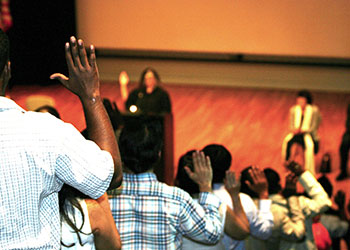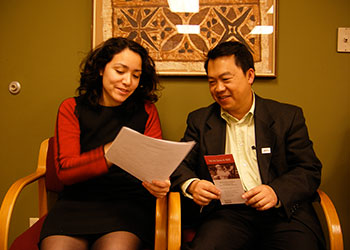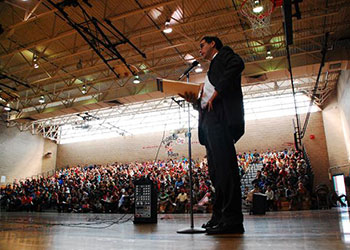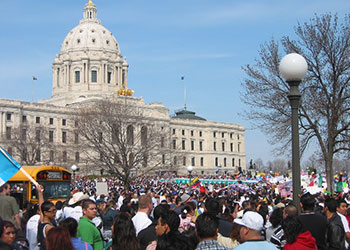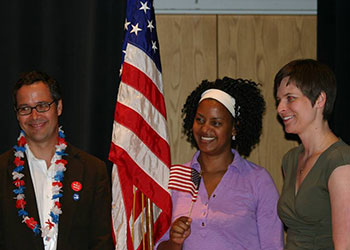News > Immigration In Minnesota
Getting to know new Minnesotans – Part One: How many immigrants?
Posted on Apr 25 2017
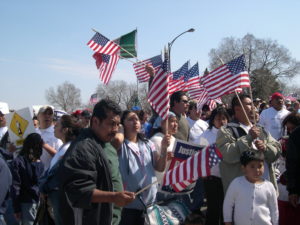
A four-year-old Somali girl, rejoining her mother and sisters after being separated from them almost all of her young life. A farm worker, proudly becoming a citizen 28 years after moving from Mexico to Minnesota. A husband and wife, reunited in Minnesota 12 years after fleeing political persecution in Laos. Minnesota’s immigrants come from all over the world, and each one has their own story. Besides those individual stories, Minnesota’s immigrants are part of a larger picture. The “Getting to know new Minnesotans” series will explore some of that larger picture.
Minnesota residents include about 430,000 immigrants. About 45 percent of Minnesota’s immigrants have become U.S. citizens, but they are still counted as part of the immigrant population. Immigrants are people who were born in another country.
Compared to the country as a whole, Minnesota does not have a high immigrant population. Immigrants make up 13.5 percent of the national population but only 8.3 percent of Minnesota’s population in 2015.
Historically, that’s also a low percentage of immigrants. From 1850-1900, more than 30 percent of Minnesotans were immigrants. Then the number of immigrants dropped steadily, falling below below five percent from about 1960-2000. Since 2000, international immigration to Minnesota has increased again.[1]
Minnesota welcomes a larger proportion of refugees than the national average. According to University of Minnesota research data:
“Minnesota has received as few as 1,000 and as many as 7,000 resettled refugees annually between 1979 and 2015. On average, Minnesota has received about 2,800 resettled refugees annually over this time period. In the last five years, Minnesota has received an average of only 2,200 resettled refugees annually.”[2]
Does Minnesota have too many immigrants? Or not enough? The state demographer’s office and other researchers say Minnesota needs continuing immigration to grow — or even to maintain current population.
“Within the next three decades, the number of births in Minnesota will be eclipsed by the number of deaths—for the first time in our state’s history. When that occurs, by the early 2040s, if our state is to experience any population growth at all, it will necessarily be from migration. Over these same coming decades, the Baby Boomer generation will continue to exit the labor force, and overall labor force growth will slow nearly to a halt. Thus, our state will experience a heightened need for migration to grow at all, but especially to shore up its labor force needs.”[3]
– – – – –
[1] Allen, Ryan and Karl Schuettler. Immigrants and Minnesota’s Workforce. Minnesota: University of Minnesota, 2017, p. 13 <http://www.research.umn.edu/business/documents/OVPR%20Immigrant%20Workforce%20Development%20Report.pdf>
[2] Allen, Ryan and Karl Schuettler. Immigrants and Minnesota’s Workforce. Minnesota: University of Minnesota, 2017, p. 13 <http://www.research.umn.edu/business/documents/OVPR%20Immigrant%20Workforce%20Development%20Report.pdf>
[3] Minnesota on the Move: Migration Patterns and Implications, Minnesota State Demographic Center, January 2015, p. 3 <https://mn.gov/admin/assets/mn-on-the-move-migration-report-msdc-jan2015_tcm36-219517.pdf>
